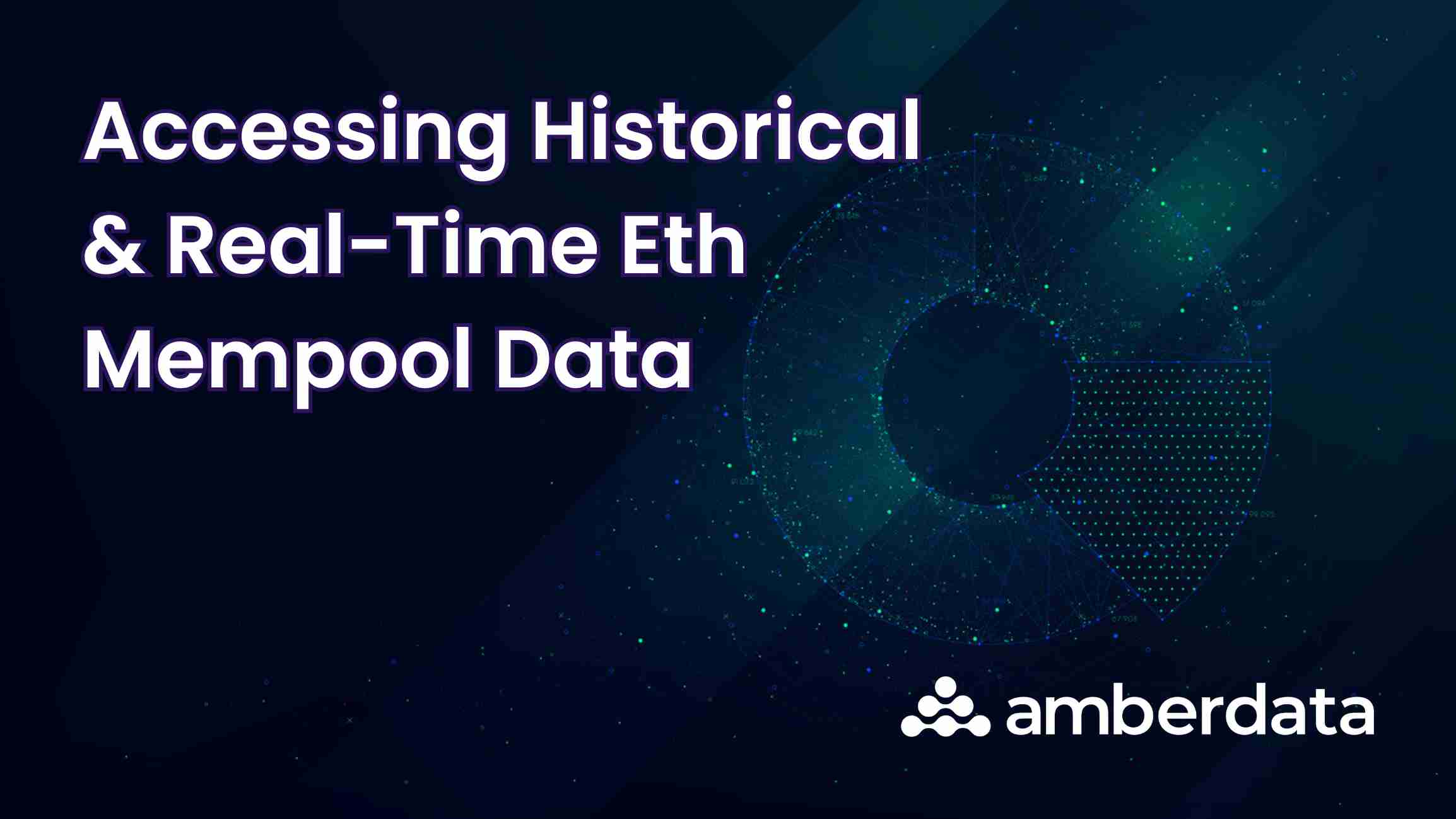How to Access Historical and Real-Time Eth Mempool Data

There are use cases of mempool data that go beyond surface-level transaction monitoring. From debugging smart contracts to optimizing trading strategies, mempool data offers a wealth of information for traders, developers, and analysts alike. And with the help of a blockchain API provider, accessing this data has never been easier.
What is a Mempool?
Before delving into specific use cases of mempool analytics or how to access Ethereum mempool data, let's start with a brief review of the mempool. Mempool, short for memory pool, is a temporary storage area in the blockchain where transactions are held before inclusion in the next available block. Think of it as a waiting room for transactions.
On Proof-of-Work networks (PoW), miners prioritize the transactions in the mempool based on the associated gas fees, among other criteria, often considering maximum extractable value (MEV). Transactions with high fees are typically prioritized by miners and are included in the next block they mine, while those with low fees may remain in the mempool for a long time or be dropped.
Conversely, Proof-of-Stake (PoS) networks, such as Ethereum 2.0, utilize a type of consensus mechanism known as validators—who must have tokens staked in the network—to verify transactions and add blocks to the chain. Like PoW networks, pending transactions exist in the mempool until they are added to a block, and validators still consider MEV when creating new blocks.
Mempool data use cases
Traders, developers, and analysts alike use both historical and real-time Ethereum mempool data to get actionable insights. Real-time mempool data gives you, in a sense, a peek at the future. It shows you pending transaction data before it is written to a block, and can help you anticipate large movements to or from exchanges, counterparties, or particular addresses. Historical mempool data provides insights into a blockchain’s past activity, which is useful when analyzing trends throughout time.
The mempool data is a valuable source of information for analyzing blockchain activity with a myriad of use cases, such as:
Debugging smart contracts
Mempool data offers unique insights that can be instrumental in debugging smart contracts. By observing the transactions that are waiting in the mempool, developers can determine if their smart contracts are behaving as expected. For example, when a transaction from a smart contract remains in the mempool for an extended period, it could suggest that the gas fee for the transaction is insufficient for miners to prioritize it.
Additionally, if a transaction fails and is returned to the mempool, developers can use this information to troubleshoot the contract's code. Thus, mempool data provides real-time feedback allowing developers to make necessary adjustments to a smart contract's parameters or code, ensuring it runs efficiently and as intended.
Monitoring trading bot performance
With the real-time insights into pending transactions that mempool analytics provide, traders can gain a competitive edge in terms of timing and execution of trades. For instance, a sudden surge in the mempool might indicate an increase in trading activity, allowing bots to adjust their strategies accordingly.
Also, by analyzing transaction fees in the mempool, trading bots can optimize their gas fees to ensure the timely execution of their transactions, especially during times of network congestion. Hence, access to mempool data can significantly enhance the efficiency and profitability of algorithmic trading bots in the volatile crypto market.
Whale watching
The actions of large market participants, often referred to as 'whales', can significantly influence the direction of the market. The premise is that understanding the actions of the market's influential participants and aligning one's investment activities accordingly can lead to profitable outcomes. In traditional equity markets, substantial resources are dedicated to deciphering the activities of these large players with in-depth technical analysis.
In the cryptocurrency market, this process is comparatively straightforward—rather than relying on intricate chart analysis, analysts can review real-time mempool data to identify wallet addresses with large-scale transactions and watch what they’re doing.
With access to mempool data, you can query, analyze, and build custom tools for whale watching. Whether you’re a trader or a market maker, human or bot, identifying and responding to whales in real-time is a winning strategy.
How to access Ethereum mempool data with a blockchain API
Ethereum mempool data is available via the Blockchain Transactions endpoint, enabling users to query transactions, pending transactions, completed transactions, or failed transactions.
Our API offers both a real-time view using the WebSocket Secure (WSS) endpoint and historical data using the REST endpoint. With the WSS endpoint, you can access real-time Ethereum mempool data, including details such as the transaction hash, time in mempool, transaction size, and fee. We support historical Ethereum mempool data going back to January 2018.
Benefits of using a blockchain API for mempool data analysis
Using a blockchain API to access mempool data has several advantages. First, it provides a single access point for data from multiple blockchains, including Bitcoin, Litecoin, and Ethereum. Utilizing a blockchain API provider also helps improve implementation for developers by reducing development time and minimizing operational headaches like hosting a node or building digital assets data infrastructure in-house.
Amberdata gives you the mempool data you need
At Amberdata, we understand the importance of having timely, accurate data at your fingertips. As the crypto industry continuously evolves, so too does our commitment to providing you with comprehensive, easily accessible data for your blockchain analysis needs. Whether you're debugging smart contracts, monitoring trading bot performance, or whale watching, our platform can help you achieve your goals.
If you are interested in exploring more data covered by our blockchain API or learning more about mempool data and its applications, please contact us to Book a Demo.
Amberdata
Amberdata is the leading provider of global financial infrastructure for digital assets. Our institutional-grade solutions deliver data, analytics and comprehensive tools and insights that empower financial institutions to research, trade, and manage risk and compliance in digital assets. Amberdata serves as a...
